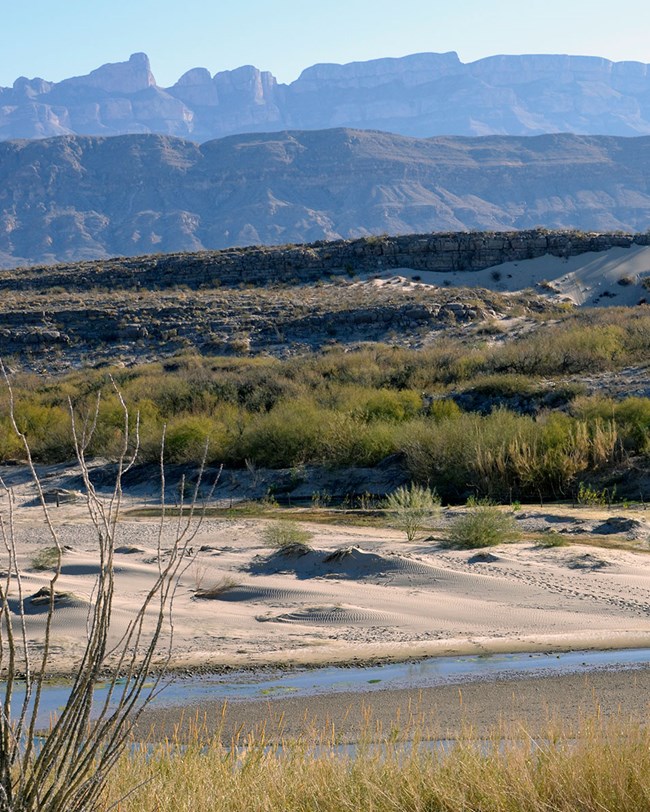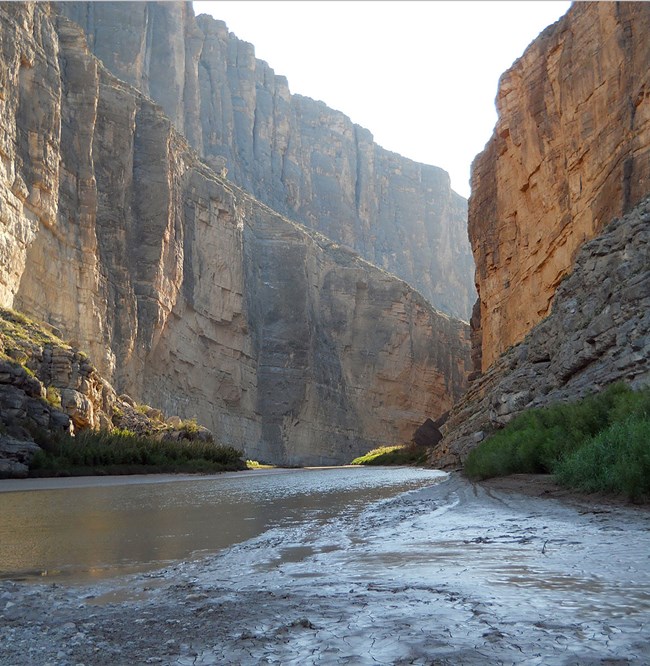Last updated: June 17, 2024
Article
NPS Geodiversity Atlas—Big Bend National Park, Texas
Geodiversity refers to the full variety of natural geologic (rocks, minerals, sediments, fossils, landforms, and physical processes) and soil resources and processes that occur in the park. A product of the Geologic Resources Inventory, the NPS Geodiversity Atlas delivers information in support of education, Geoconservation, and integrated management of living (biotic) and non-living (abiotic) components of the ecosystem.

Introduction
Big Bend National Park (BIBE) lies at the southernmost tip of Trans-Pecos Texas in Brewster County, southwestern Texas along the U.S.–Mexico border. The park was established June 20, 1935 and encompasses approximately 324,219 hectares (801,163 acres). Mountains contrast with desert within the great bend of the Rio Grande, with an elevation of less than 549 m (1,800 ft) along the river valley to nearly 2,438 m (8,000 ft) in the Chisos Mountains (Anderson 2017). The natural beauty of BIBE includes massive canyons, vast desert expanses, volcanic landscapes, forested mountains, and an ever-changing river. The park was designated a Biosphere Reserve in 1976.
Geologic Setting
The geology of BIBE is complex as the region has hosted a diversity of depositional environments coupled with multiple tectonic events. A wide variety of sedimentary, extrusive volcanic, and 24 intrusive igneous rocks are exposed in the park, and the span of geologic time represented by them extends from the early Paleozoic to Quaternary (Maxwell et al. 1967; Turner et al. 2011). However, most of the chaotic, disturbed landscape of BIBE is composed of exposures of rocks dating to the Cretaceous or younger. Throughout much of the Paleozoic the BIBE area was occupied by an ancient ocean that subsequently disappeared as two large land masses collided to form the Ouachita Mountains. Shallow seas flooded the park region during the Cretaceous and began to retreat as a second mountain-building event occurred that formed the Rocky Mountains and resulted in large-scale uplifts of rock. Regional crustal extension (pulling apart of Earth’s crust) resulting in several volcanic eruptions and vertical faulting in BIBE beginning around 30 million years ago. The subsequent history of the park is dominantly that of erosion, where the Rio Grande has carved deep, steep-walled canyons along the folded strata and tilted fault blocks (Maxwell et al. 1967).
Regional Geology
Big Bend National Park is a part of the Southern Basin and Range Physiographic Province and shares its geologic history and some characteristic geologic formations with a region that extends well beyond park boundaries.
- Scoping summaries are records of scoping meetings where NPS staff and local geologists determined the park’s geologic mapping plan and what content should be included in the report.
- Digital geologic maps include files for viewing in GIS software, a guide to using the data, and a document with ancillary map information. Newer products also include data viewable in Google Earth and online map services.
- Reports use the maps to discuss the park’s setting and significance, notable geologic features and processes, geologic resource management issues, and geologic history.
- Posters are a static view of the GIS data in PDF format. Newer posters include aerial imagery or shaded relief and other park information. They are also included with the reports.
- Projects list basic information about the program and all products available for a park.
Source: Data Store Saved Search 2717. To search for additional information, visit the Data Store.
A NPS Soil Resources Inventory project has been completed for Big Bend National Park and can be found on the NPS Data Store.
Source: Data Store Saved Search 2772. To search for additional information, visit the Data Store.

Related Links
